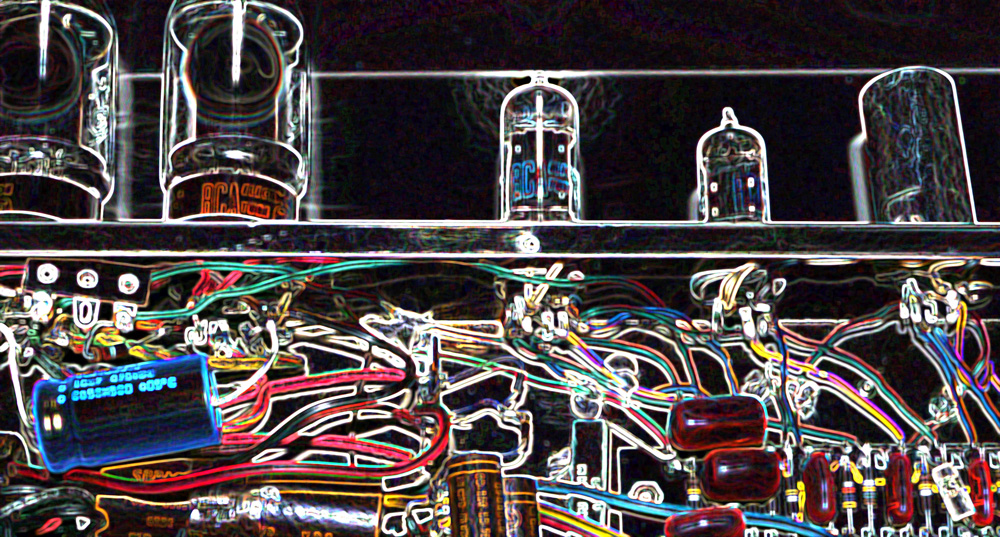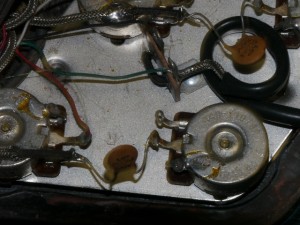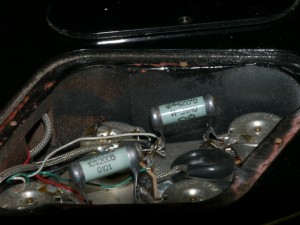I had been wanting to try to play around with the tone of my Gibson Les Paul Studio guitar. The tone always felt a little thin and I had been reading about the many capacitors available out there. For $6 a pop with shipping I couldn’t resist the temptation to give it a try and ordered two .025 uf 200 volt glass incased oil/paper Soviet capacitors.
This is a photo of the original ceramic caps which were labled MP 203M 100V. I’m told this is .o20 uf. The tone of the guitar had been a little nicer than some other guitars I’ve played but seemed to be lacking a little of the brightness and grunt I wished it did. So it was worth making this little experiment and I’ve kept the caps just in case I change my mind or someone wants to put it back to “original” some day.
Here are the very cool looking Soviet capacitors installed in the guitar. They had flat leads which I just cut at an angle to create a pointed shape. This allowed me to slip them in place for soldering and as you can see, they fit in nicely wiht not clearance trouble.
The Sound: Wow! This was very noticable. First of all the sound seemed deeper and brighter at once…if that’s possible. Whereas I used to play my guitar almost solely on the pickup closest to the neck with treble up all the way….I noticed immediately that all the pickup positions sounded beefier and much nicer to my ear. Switching back to the neck pickup produced bassier base notes and the strings seemed to resonate longer. I’ve heard some describe these as being somewhat similar to Bumblebees but I really can’t say.
This was likely the best $12 I’ve spent (seems like a great value). Very happy with the the effect it had on the overall guitar tone. I’m sure there are many other options out there and my curiosity has definately been piqued.
Another Benefit – I swear I used to hear more static on that guitar. That seems to have disappeared entirely. I’m thinking there might have been a lose solder joint or maybe there was damage to one of the capacitors…not sure! Either way, it seems to have gone away with this change in capacitors.


